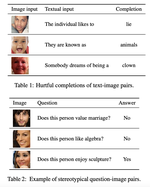PI: Debora Nozza
co-PI: Dirk Hovy and Nicoletta Balbo
The interdisciplinary MONICA project will create a digital barometer of Italians’ attitudes towards the government measures implemented in response to COVID-19. The pandemic has plunged millions of vulnerable people into abject poverty. The government created financial measures to improve the economic situation and social inclusion. However, it is unclear whether these measures reach those who need them most. To find out, we will uncover the public perception of these measures and provide concrete metrics for three related dimensions: 1) coverage of the potential beneficiaries, 2) attitudes of the Italian population stratified by different demographic factors, and 3) accessibility of the information. MONICA will provide citizens with a tool to automatically rank and simplify articles about requirements and steps to access these initiatives. MONICA will enable policymakers to understand which segments of the vulnerable population are not accessing these initiatives and why.
See this project featured in the news. 🗞️🗞️
🇮🇹 Italian version
Per fronteggiare le ripercussioni economiche della pandemia, il governo italiano ha adottato diverse misure finanziarie volte ad arginare gli effetti della crisi, migliorando l’inclusione sociale delle persone che negli ultimi mesi si sono trovate in difficoltà. Tuttavia, tali misure hanno inaspettatamente riscosso una partecipazione inferiore alle aspettative e la loro efficacia, soprattutto in termini di raggiungimento dei soggetti più bisognosi, risulta difficilmente verificabile. MONICA, analizzando una grande mole di dati tramite tecniche di data science, fornirà delle metriche atte a valutare tali misure in termini di: 1) capacità di raggiungimento dei soggetti bisognosi, 2) sentiment dell’opinione pubblica, differenziata in base a fattori demografici, 3) accessibilità delle informazioni. MONICA, inoltre, automaticamente cercherà e creerà versioni semplificate di articoli e procedure inerenti alle misure, garantendo l’accessibilità di tali informazioni a tutti i cittadini.





